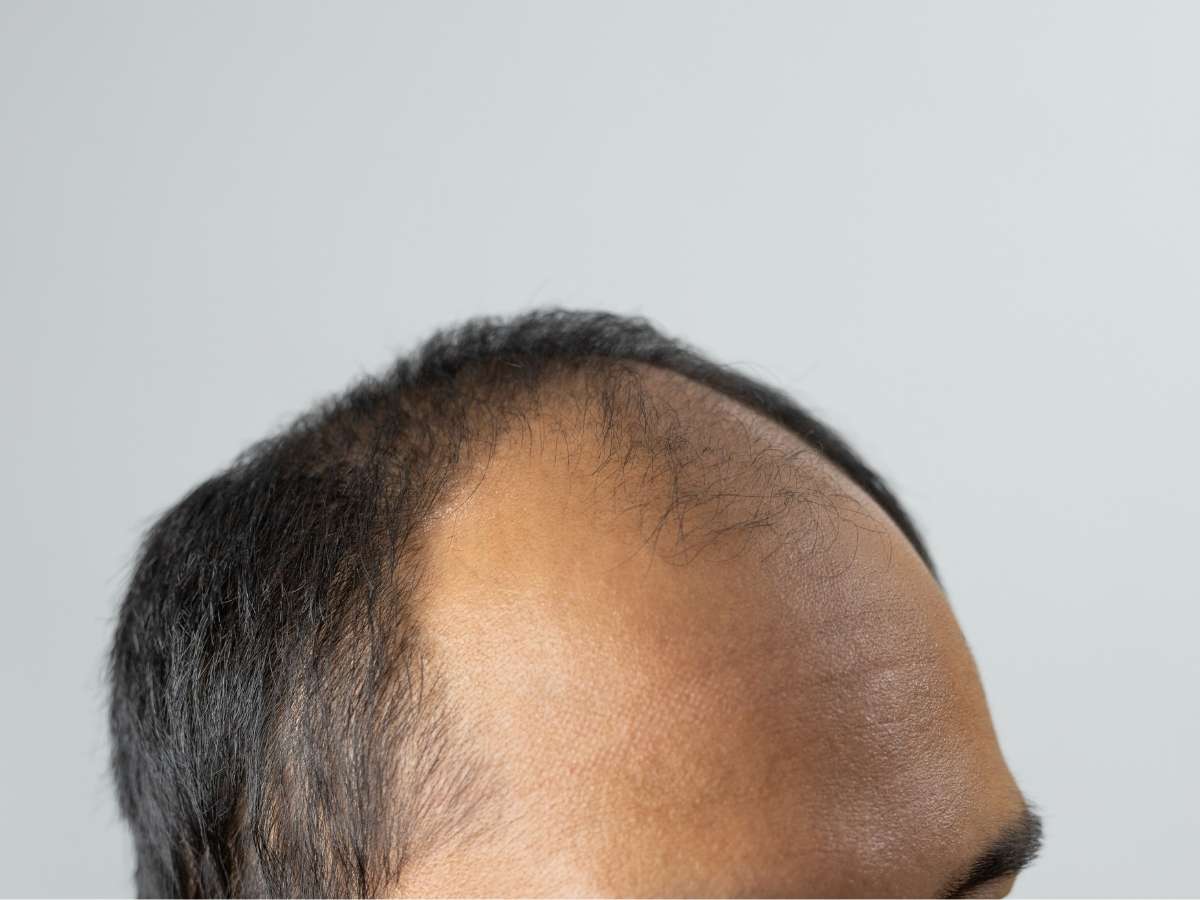Hair loss is a common concern among Filipino men, especially as they reach their late 20s and early 30s. While some thinning is natural with age, male pattern baldness (MPB) or androgenetic alopecia is a genetic condition that affects millions of men worldwide. If left untreated, it can progress from a slightly receding hairline to full baldness over time.
Many Filipino men don’t recognize the early signs of hair loss until it’s too late to reverse. The key to keeping your hair longer is spotting the warning signs early and taking proactive steps to slow or prevent further hair loss. In this guide, we’ll cover the signs of male pattern baldness, what causes it, and science-backed ways to prevent and manage it.
What Causes Male Pattern Baldness?
Male pattern baldness is mostly genetic, meaning if your father, grandfather, or uncles experienced hair loss, you might be at risk too. However, it’s not just about genes—hormones, lifestyle, and overall health can accelerate hair loss.
1. DHT: The Hormone That Causes Hair Loss
The main culprit behind male pattern baldness is dihydrotestosterone (DHT), a byproduct of testosterone. DHT shrinks hair follicles, making them smaller over time until they eventually stop producing hair. Some men are more sensitive to DHT, which is why they experience hair loss earlier than others.
2. Other Contributing Factors
-
Stress – Chronic stress can trigger hair shedding and worsen genetic hair loss.
-
Poor Diet – Nutritional deficiencies, particularly low iron, biotin, and vitamin D, can weaken hair follicles.
-
Scalp Health – Dandruff, excess oil, or inflammation can contribute to hair thinning.
-
Lifestyle Choices – Smoking and excessive alcohol consumption may accelerate hair loss by reducing blood flow to the scalp.
Early Signs of Male Pattern Baldness in Filipinos
Male pattern baldness doesn’t happen overnight. It starts gradually, with small changes that worsen over time. Recognizing these signs early gives you a better chance of slowing down or preventing further hair loss.
1. Receding Hairline
-
One of the first noticeable signs of MPB is a hairline that starts to move backward.
-
Most men develop an M-shaped hairline, where hair thins at the temples but remains intact in the middle.
-
This is different from a mature hairline, which is a slight recession that happens naturally with age.
2. Thinning at the Crown
-
Many men lose hair at the top of their head (the vertex) before noticing hairline recession.
-
You might see a small bald spot forming or feel less density when styling your hair.
3. Widening Part or Thinning All Over
-
Instead of just a receding hairline or crown loss, some men experience diffuse thinning, where hair becomes less dense across the entire scalp.
-
This can make hair look flat, lifeless, or difficult to style.
4. Increased Hair Shedding
-
If you’re noticing more hair in the shower drain, on your pillow, or when brushing your hair, it could be a sign of MPB.
-
Some shedding is normal (50-100 hairs per day), but excessive shedding is a red flag.
5. Miniaturization of Hair Strands
-
Hair affected by DHT doesn’t fall out immediately—it gradually shrinks before disappearing.
-
If you notice thinner, weaker, or finer hair strands, it could mean your follicles are shrinking.
How to Prevent Hair Loss and Slow Down Balding
While you can’t completely prevent genetic hair loss, you can slow down the process and even regrow hair with the right treatment plan. Here are science-backed strategies to maintain thicker, healthier hair for longer.
1. Use FDA-Approved Hair Loss Treatments
Some treatments for hair loss are available by prescription or over-the-counter in the Philippines. A doctor can determine which options are appropriate. There are two clinically proven treatments for male pattern baldness:
Minoxidil (Rogaine)
-
How it works: Increases blood flow to the scalp, extending the hair growth phase.
-
Effectiveness: Studies show 60% of men using Minoxidil see hair regrowth within 6 months.
-
How to use: Apply twice daily to thinning areas and massage into the scalp.
Finasteride (Propecia)
-
How it works: Blocks DHT, preventing further hair follicle shrinkage.
-
Effectiveness: Research from the Journal of Dermatology found that 90% of men using Finasteride for a year had significantly reduced hair loss.
-
How to use: Taken orally (1mg per day) under medical supervision.
2. Eat a Hair-Healthy Diet
Your hair needs the right nutrients to stay strong and resilient. Add these to your diet:
-
Protein-rich foods (chicken, fish, eggs) to support hair structure.
-
Leafy greens (malunggay, spinach) for iron and vitamin C.
-
Nuts and seeds (almonds, sunflower seeds) for biotin and zinc.
-
Fatty fish (salmon, sardines) for omega-3s that improve scalp health.
3. Reduce Stress & Improve Sleep
Chronic stress increases cortisol, which can accelerate hair loss. Reduce stress by:
-
Practicing meditation or deep breathing.
-
Exercising regularly to improve blood flow and hormone balance.
-
Getting 7-9 hours of sleep for optimal hair growth.
4. Improve Scalp Health
A clean, healthy scalp is essential for hair growth. Try these habits:
-
Use a mild shampoo to avoid irritation and buildup.
-
Massage your scalp for better blood circulation.
-
Avoid excessive heat styling to prevent damage.
5. Consider Hair Supplements
Certain vitamins and minerals can support hair health:
-
Biotin – Strengthens hair and nails.
-
Zinc & Iron – Prevents shedding due to deficiency.
-
Vitamin D – Low levels are linked to hair thinning.
While supplements won’t regrow lost hair, they can support overall hair health.
When to See a Doctor About Hair Loss
If you’re noticing early signs of male pattern baldness, seeking medical advice early can help preserve your hair for longer. Consider seeing a doctor if:
-
Hair loss is rapid and noticeable within a few months.
-
You experience itching, redness, or pain on the scalp.
-
There’s excessive shedding when washing or styling hair.
A healthcare provider can help diagnose the cause and recommend personalized treatment options.
Taking Control of Hair Loss
Male pattern baldness is common, but it doesn’t mean you have to accept hair loss without a fight. By recognizing the early signs and taking proactive steps, Filipino men can slow down hair loss, maintain thicker hair, and even regrow lost strands.
Key Takeaways:
-
Early signs of MPB include a receding hairline, crown thinning, and increased shedding.
-
Some medical treatments have been studied for managing hair loss; a doctor can explain suitable options.
-
Lifestyle changes, diet, and stress management can help support hair health.
-
Consulting a doctor early can help preserve your hair before it worsens.
If you’re concerned about hair loss, start treatment early to maximize your results and maintain confidence in your appearance.

















